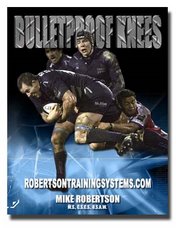Today we have a guest blog from my business partner and physical therapist extraordinaire Bill Hartman. This is a key concept when it comes to designing more effective training programs and getting the intended response.
Enjoy!
____________________________________________________________________
I think it’s important to distinguish between whether a muscle is short or if it is stiff when determining a corrective plan. Treat each case the same and only half of your clients will improve.
A short muscle lacks length. It may be that the muscle is positioned in a shortened position frequently and the muscle fibers have dropped sarcomeres in series or the connective tissues have adaptively shortened.
If you actively and/or passively stabilize the proximal attachment of the muscle and move the joint into a position to stretch the muscle, the proximal attachment will move well before reaching the end range of motion of the joint.
A stiff muscle has greater resistance to stretch. This may be due to hypertrophy or a greater quantity of connective tissues. Think of two rubber bands made of the same material, but one rubber band is wider than the other. The materials would have equal extensibility but because one has greater width, it take more force to stretch it the same length as a thinner band.
In the case of a stiff muscle, if you actively and/or passively stabilize the proximal attachment and move the joint into a position to stretch the muscle, The joint will move through it’s full range of motion without movement at the proximal attachment assuming enough force is applied to stretch the muscle.
Short muscles require repetitive, prolonged stretching to encourage creep of connective tissues and the addition of sarcomeres in series to add length.
Stiff muscles can be corrected by balancing the stiffness across a joint by strengthening their antagonists and by holding the antagonists in a shortened position as they may have been adaptively lengthened over time.
Bill
____________________________________________________________________
If you'd like to learn more about the differences between stiffness and shortness, as well as ways to address each, be sure to check out the Indy Seminar DVD's. And if you need NSCA CEU's, be sure to use the "NSCA" coupon code to get 10% off your order!
Stay strong
MR
High Octane Corrective Exercise and Performance Enhancement | www.RobertsonTrainingSystems.com
Monday, October 13, 2008
Bill Hartman Guest Blog: Stiffness vs. Shortness
Labels:
Bill Hartman,
Indy Seminar DVD Series,
Mike Robertson,
NSCA,
shortness,
stiffness
Subscribe to:
Post Comments (Atom)









No comments:
Post a Comment